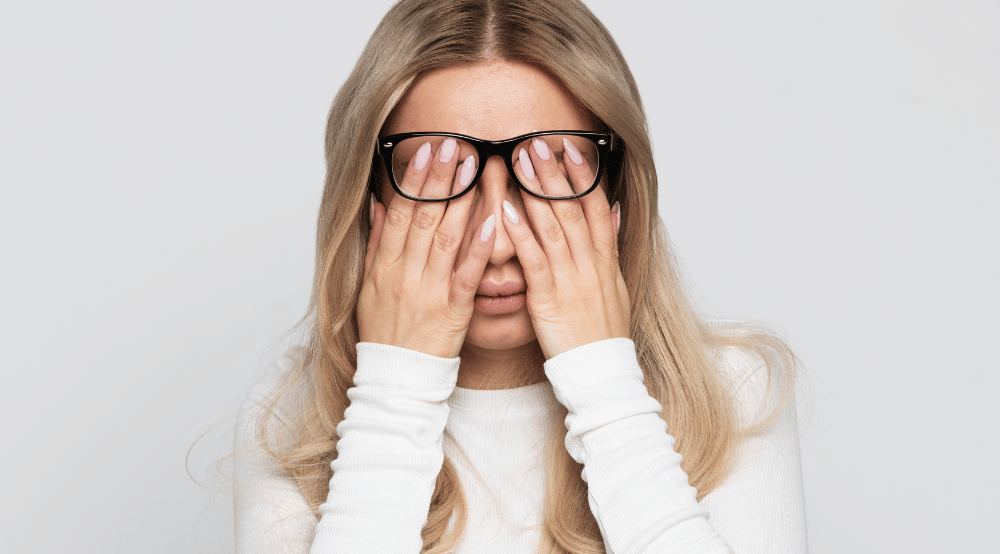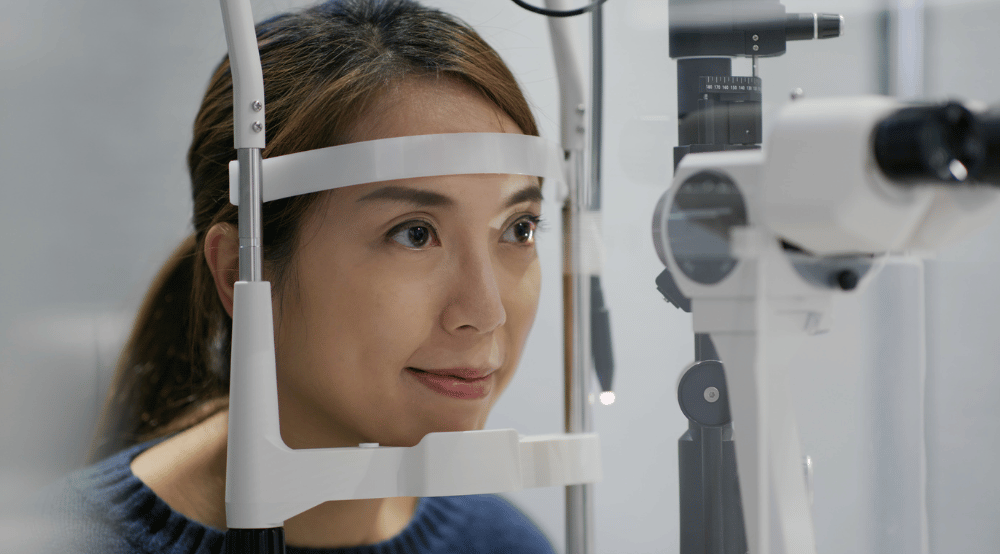SCREENS! Have you had enough of them? We live in a fast-paced world with amazing technology that allows us to continue to connect with family and friends, coworkers, clients, and healthcare professionals virtually. It’s amazing how so much of our life can go on without leaving our home or office despite the effects and limitations of the pandemic. However, this means much more time on screens than what we are used to, and more time on screens than what our eyes are naturally accustomed to. So what happens with our eyes when we use screens, and should we do anything different when we are using screens?
Screens are typically closer to our face = eye fatigue.
This means that all the time we spend on screens, our eyes have to make adjustments to stay focused at that close distance. If you are under 43 or so, this may not feel l like a big deal. Our eyes have a natural autofocus mechanism that allows them to focus up close. If you are over 43, you are gradually losing flexibility in this autofocus mechanism, and staying focused for long periods will get increasingly difficult. This will result in eye strain, eye fatigue, and sometimes headaches across your forehead and temples.
Our eyes strain and get dry.
When our eyes are straining to see up close, particularly when we are trying to stay focused on screens, we blink less. Because we blink less, our eyes dry out. As they dry, they get uncomfortable and can even start to itch, burn, and feel gritty. As part of a nasty feedback loop, the dryer our eyes get, the harder we have to strain to stay focused; then our eyes get even dryer.
Our posture gets bad.
As our eyes strain to see close up, we gradually lean into our screen. This is why at the end of the day, your shoulders can feel tense, your neck can feel stiff and sore, and your back can even feel tight.
Blue light effects.
We are exposed to certain high-energy wavelengths of blue light from almost every source of light we encounter. Blue light exposure helps regulate our circadian rhythms (generally speaking, humankind’s greatest source of blue light is the sun. When the sun goes down, and the blue light goes away, it is a critical cue for our brains to relax and sleep). However, LED light sources emit a concentrated amount of these high-energy blue light wavelengths. Studies show that our eyes have difficulty processing too much blue light, and this contributes to our overall strain. For some people (especially kids) too much screen exposure in the afternoon or evening may make settling down for bed at the end of the day more difficult. Ongoing research suggests that for some people, exposure to too much blue light over their lifetime may contribute to eye health concerns like cataracts and macular degeneration.
So what do we do about screen use?
- Take frequent breaks: Research shows that giving our eyes breaks regularly can help them feel more comfortable and reduce many of the symptoms noted above. A break for our eyes just means taking about 20 or 30 seconds and blinking slowly and intentionally and refocusing our eyes on something far away (out a window or down the hall). Taking this kind of break about every 20-30 minutes can make a big difference in how your eyes feel at the end of the day. Also, mind your posture and think about how your neck and shoulders relax when you take breaks.
- Wear glasses: While our eyes have an auto-focus mechanism, it wasn’t designed to be working for long periods. The muscles in and around our eyes get fatigued with too much work. Think of a bodybuilder: they have huge biceps, but they don’t flex those muscles for 8-10 hours straight like we are asking our eyes to. Glasses with mild power in them designed for your computer or screen distance do some of the focusing work for you so your eyes don’t have to strain so hard. There are numerous types of these glasses from single vision (the whole lens has one power in it calibrated for your computer distance) to office multifocal lenses (variable power in the lens to give you flexibility to see everything in your office environment).
- Block the blue light: There are several ways to block or minimize the blue light emitted from your screen. Some devices have settings like the night shift setting that reduce the high-energy blue light. This helps, but can change the appearance or colors of your screen. You can purchase screen filters that fit onto the screen and filter out the blue light. Glasses with blue-blocking anti-glare treatment are a good option because they block the blue light from any source.
What about kids? All of the issues and solutions discussed above affect adults and children alike. With so much of our kids’ school online or on devices, they are exposed to high-energy blue light as much as or more than many adults. All the same rules apply: encourage frequent breaks, watch their posture, and find ways to limit blue light exposure. Not sure if your child should wear glasses at the computer? Schedule an eye exam, and we can measure their vision and near focusing capability and then make recommendations for how best to address their screen needs.




